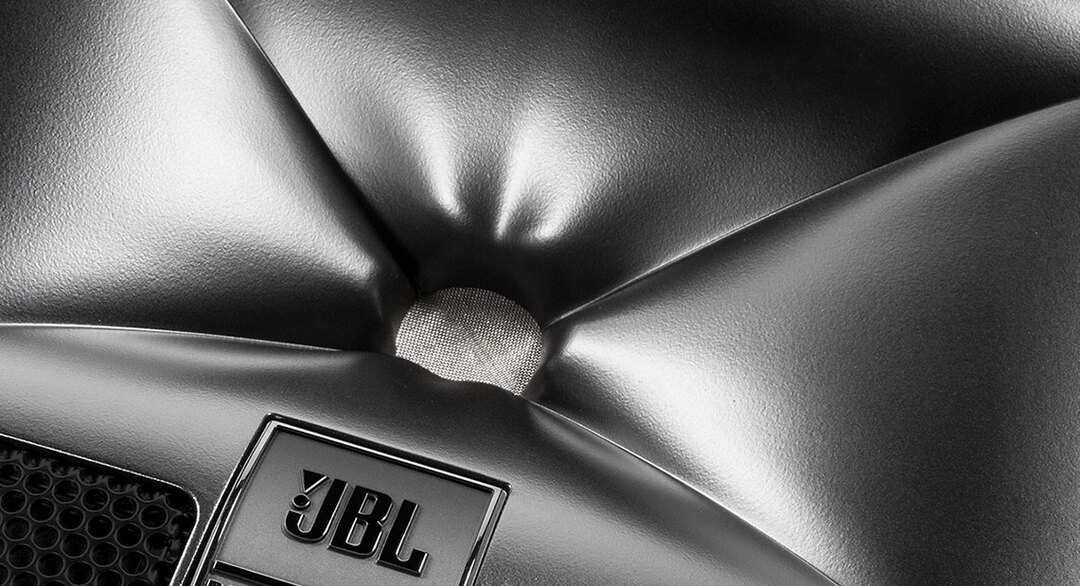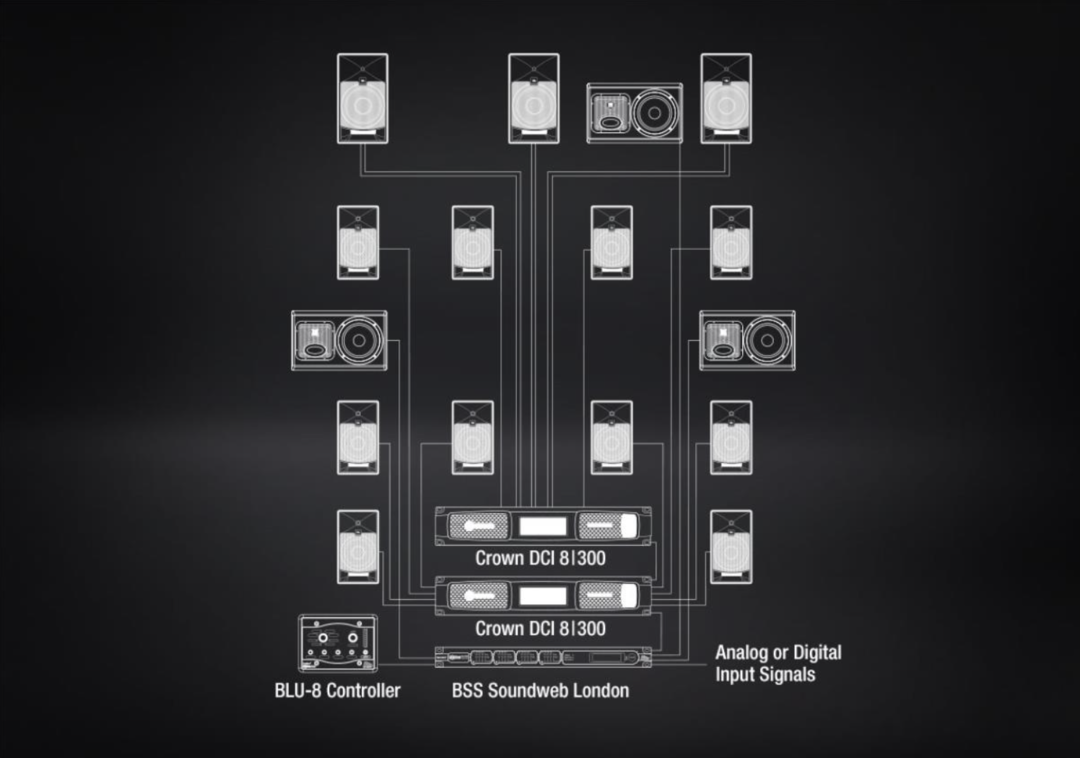

Let's start with a break down the specifics of the Dolby Atmos spec below.
A reference to a Dolby Atmos Standards Speaker Setup can also be found here.
The left, centre, right channels must be identical to ensure good imaging across the front channels. They should be equal distance from the reference listening position (and each other) with their acoustic centre’s on axis to the listener’s ears as well as being on the same horizontal plane as each other. All front speakers must exhibit the same acoustic polarity.
Whenever possible, use the same speakers all around to achieve uniformity. However this isn’t always possible for cost/space reasons. So it is acceptable to use smaller speakers as long as they keep the same “character” – a common solution is to use a smaller version of the L,C,R speakers, but in most cases the same manufacturer would do.
Again the surround speakers should be on axis to the listener’s ears and the arrival timing should coincide with the L,C,R channels.
There are two options for speaker types that can be used to playback the height/overhead channels: discrete and Dolby Enabled.
Discrete speakers are a speaker that is physically mounted to (or in) the ceiling, while Dolby Enabled are specially licensed technology from Dolby that reflect the sound off of the ceiling from the listeners horizontal plane. You commonly see these in commercial products such as sound bars which allow (for example) 5.1 from a single speaker position.
In post pro (and our personal opinion) it is generally recommended that a control room use discrete speakers overhead wherever possible as Dolby Enabled speakers have the potential of creating a more diffuse image at listening position (as directional as sound can be, firing it
at the ceiling then back down does cause diffusion and some loss of level). Discrete speakers offer more precision when mixing and panning creating a more controlled mix that will playback better for the consumer on any Dolby Atmos renderer.
Again wherever possible its best to use the same speakers all around to achieve uniformity. Although this is often harder to achieve with ceiling speakers as many surround speakers don’t have bracketry that can be mounted to ceilings. So the ceiling speakers can be smaller than the surrounds but must maintain the same character as stated above.
The LFE channel requires the use of at least one subwoofer in the monitor system. The bass from any channel that is not reproduced in the main speakers must be redirected to the subwoofer(s) to be bass managed. It is important to correctly integrate the subwoofer(s) in proper relation to the main 5 channels to ensure a wide, smooth and uniform frequency response (it’s meant to be even throughout the space, not directional).
Positioning the subwoofer can be a little bit more tricky than other speaker placements and really should be decided upon by placing the sub in multiple likely subwoofer locations and playing low frequency content to check response (see our install sub blog for some fun reading on boundary effect!). Locations delivering the smoothest bass response should win the prize for final placement location. Keep in mind a certain amount of experimentation should be expected, particularly when retrofitting an existing production room.
For small-format post production studios our recommendation is to use the JBL 7 series loudspeakers. This multiple award winning series is seen in top flight post pro studios such as those in Soho (London) as well as Goldcrest, Sound24, Halo, Pinewood and Twickenham Studios.

The JBL 7 series consists of 4 speaker versions; A 5” passive or active (705i (passive), 705p (powered) and an 8” passive or active (708i (passive), 708p (powered). The active speakers are powered by internal Crown amplifiers with their built in DSP for simplicity of use. This has proven very popular in home setups or systems where external amp racks aren’t feasible.
The 7 series meets the dynamic range and extended frequency response of today’s production formats (including Dolby Atmos). The 2409H high frequency driver incorporates a low-mass annular diaphragm that delivers a smooth response even beyond 40kHz with extraordinary output and very low distortion.
Leveraging patented technologies developed for our flagship M2 Master Reference Monitor, 7 Series Studio Monitors deliver detailed imaging, extended frequency response and remarkable output from compact enclosures. The custom 5” and 8” low frequency drivers produce remarkable low frequency output at a high output with minimal power compression. On testing at our Letchworth facility we really were amazed just how much low end these small boxes can kick out.

First introduced in the JBL M2 monitors the same image control wave guide technology included in the 7 series allows a seamless crossover and uncoloured response in the critical dialog range, a neutral off-axis response for greater accuracy and room-to-room consistency. But maybe most importantly for this application, a detailed imaging with a coherent transition between screen channels, surrounds and overhead speakers.
The compact enclosures of the 7 series really help to minimise interference with sight lines to the video monitor when mixing. The front ports allow shelf and soffit mounting without degradation in performance with the rear and bottom mounting points giving a range of mounting options for wall and ceiling in either the vertical or horizontal orientation.
As Dolby’s standard suggested above, its best to try and keep all speakers as similar as possible when designing a Post production studio. The 7 series can offer that in abundance, with options for using them for both screen channels and surrounds/overheads.
Screen channels should usually be larger than surrounds so the LSR708i’s or LSR708P’s should be used for your left, centre, right channels, with LSR705i’s or LSR708P’s to be used for surrounds and overheads. This way you keep uniformity across your system to create the most controlled and accurate mix possible.

The passive versions require amplification which is often preferable in these applications as it means any amp noise can be in a separate rack outside the space (or in a cupboard). It’s best to keep things uniform and if possible only use the same range/model of amplifier. We suggest Crown’s 4|600 DSP amp (DCi or CDi) for the 7 Series. This provides 4 channels of 600W for amplification of each driver in a stereo pair, with plenty of helpful DSP behind it for getting you levels, delay and EQ set for the space. These ranges have speaker tuning pre-sets for the 7 series, so all you have to do is manually set the room EQ and delay. If budget is a concern (and lets be honest… when isn’t it?) you could probably get away with a CDi 4|300 amp for powering the 7 series but we try and stick to 600W where possible for that extra headroom that’s so important in the cinema/post pro world.
The next piece of this post production jigsaw is the subwoofer. If you’re looking for an absolute monster, it would be worth looking at something like the JBL SUB 18, which is JBL’s most powerful studio subwoofer boasting very high continuous output and an extreme low frequency response. The alternative is to go with something a bit more subtle like a JBL LSR6312SP, a powered 12” sub which is perfect for bass management in a small studio environment… not that these 7 series monitors need much bass management, with even the 5” model going surprisingly low.

The above image shows a potential layout with Crown’s DCi amps and BSS Soundweb digital signal processor for routing and control. It consists of 3 LSR708i’s for left, centre and right channels. 6 LSR705i’s for surrounds and 4 LSR705i’s for ceiling channels with 3 LSR6312SP subs. This would be a very capable, top tier system, hitting all of the Dolby requirements needed for a Dolby Atmos studio.
The last area to mention is DSP. HARMAN's top tier DSP brand is BSS Soundweb, offering a range of open architecture system processors to handle everything from a small shop right up to top end EN-54 monitored stadium solutions. The BSS BLU-806DA processor is very popular in the cinema/post pro market as it has built in Dante for audio over IP distribution and plenty of processing to handle even the most demanding of requirements. The BLU-160 has the same processing but without the Dante element.

For smaller cinema systems JBL also have the CPi2000 system processor which can handle DSP/Room EQ and Distributions for cinema systems up to 7.1.

Another HARMAN box of note in many of these setups is the JBL Intonato 24. The JBL Intonato is Monitor Management Tuning System which provides easy setup, automated calibration and comprehensive control of professional monitoring systems. Housed in a 2U rack-mount enclosure (with an optional Remote Control), Intonato 24 can control up to 24 speakers configured as stereo, surround or immersive audio systems, making it suitable for use in post pro where multiple setups and switching may be required. You can create and recall customized routing of the 24 analog, digital and networked (BLULink) audio sources.
This is a particularly good fit with JBL 7 Series setups, as demonstrated in our case study with our friends at Sound 24:
In what has been a very challenging period for everyone it’s reassuring to know post-pro is still working, mixing your favourite shows and films in spite of the restrictions on our industry. So if you are interested in post-production of any scale, or our cinema solutions, please get in touch with the Project Team at Sound Technology who can help advise on a solution that will work for you.